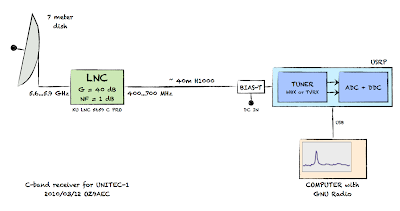As you probably already know the UNITEC-1 launch got scrubbed today (17th May). Fortunately, there is a launch window every day for the next few weeks.
During the last few days I learned that tracking UNITEC-1 will be very difficult because the available trajectory data can be very uncertain. Therefore, we decided to use a smaller antenna with wider beam width in the first few days after launch. One option was to mount the IKEA dish to piggyback the 7m dish, another option was to use a 90cm dish which is currently equipped with a 2.4 GHz feed. We decided to go for the second option.
